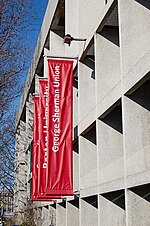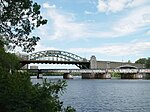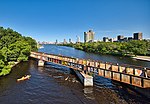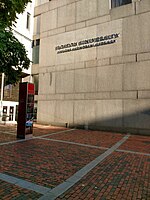Boston University Academy
Boston University Academy (BUA) is a private high school operated by Boston University. Founded in 1993 and located on the Boston University campus, the academy is geared toward college preparatory work. As part of its integration with the university, students are able to take college courses for credit their junior and senior years, and are guaranteed acceptance to Boston University upon maintaining a 3.0 grade point average in Boston University courses. BUA's student body is drawn from 55 communities: 52% come from public schools, 39% from independent schools, 7% from parochial schools and 2% are from home-school or international schools; 57% are students of color and 47% of students come from multilingual households (representing 26 languages). BUA provides need-based tuition assistance to approximately 31% of the students as of the 2019–2020 academic year.
Excerpt from the Wikipedia article Boston University Academy (License: CC BY-SA 3.0, Authors).Boston University Academy
University Road, Boston Fenway / Kenmore
Geographical coordinates (GPS) Address Phone number Website External links Nearby Places Show on map
Geographical coordinates (GPS)
| Latitude | Longitude |
|---|---|
| N 42.351 ° | E -71.1098 ° |
Address
Boston University Academy
University Road 1
02215 Boston, Fenway / Kenmore
Massachusetts, United States
Open on Google Maps








